The 11 Coolest Ocean Animals in Florida
The ocean is full of marine life but these animals stick out for one reason or another. Keep your eyes peeled down in Florida, who knows what you might run into.
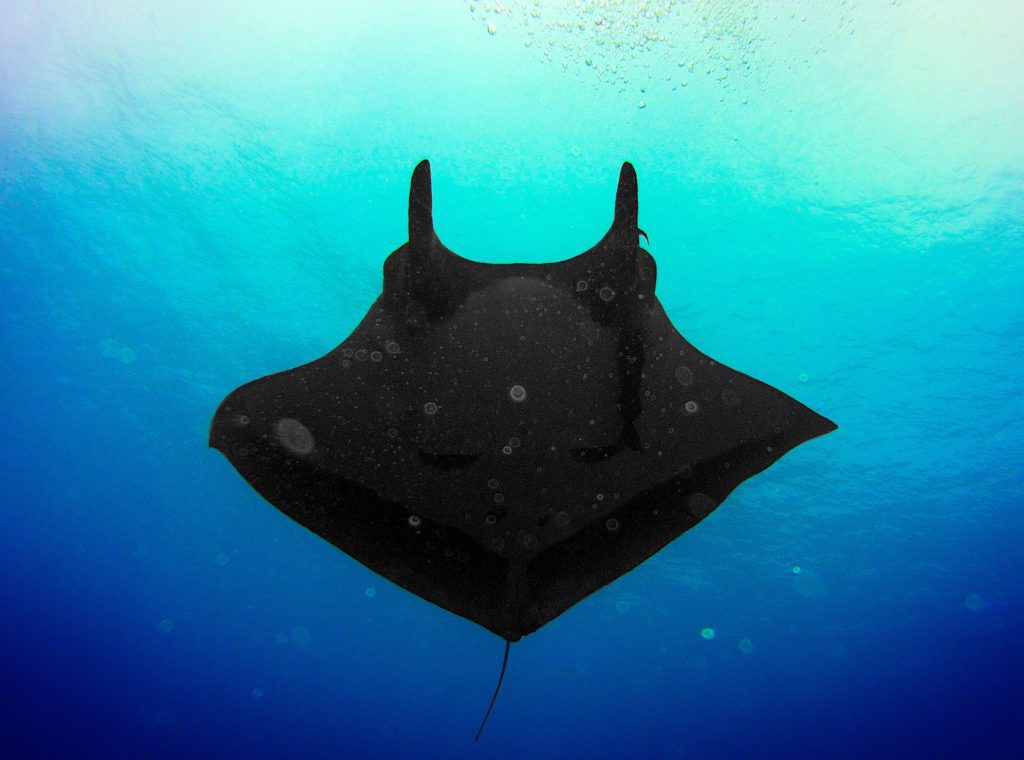
What’s so special about the waters in Florida, anyway?
Other than the obvious fact that it’s surrounded by the ocean, Florida actually has a few things going for it in terms of attracting marine life:
- The Florida Reef Tract. This 360 linear mile reef system runs from Dry Tortugas National Park west of Key West, all the way to St Lucie Inlet in Martin County. The reef system is the third longest barrier reef in the world after The Great Barrier Reef in Australia and the Mesoamerican Barrier Reef in Central America and Mexico.
- Proximity to the Gulf Stream. This major ocean current brings warm water from the Gulf of Mexico all the way to Europe, passing closely by South Florida and the Florida Keys. An abundance of marine life migrate in this current for reproduction and feeding.
The combination of the two make Florida one of the world’s premier locations for marine life!
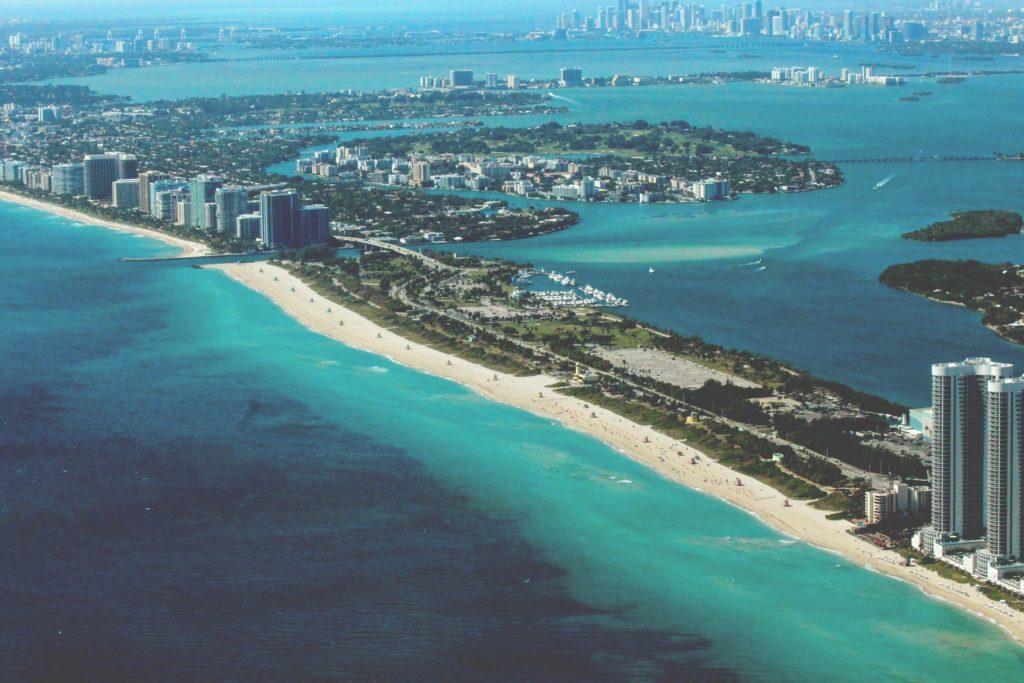
Meet the Crew: the Coolest Ocean Animals in Florida
To make the crew of the coolest ocean animals in Florida we’re looking for a few things: uniqueness, shock and awe, and the wow factor. You know? The kind of animal you stop everything to gaze at. The kind of animal that drops your jaw in disbelief.
And for all you scientists: the charismatic megafauna, if you will.
Dive on in to meet the crew!
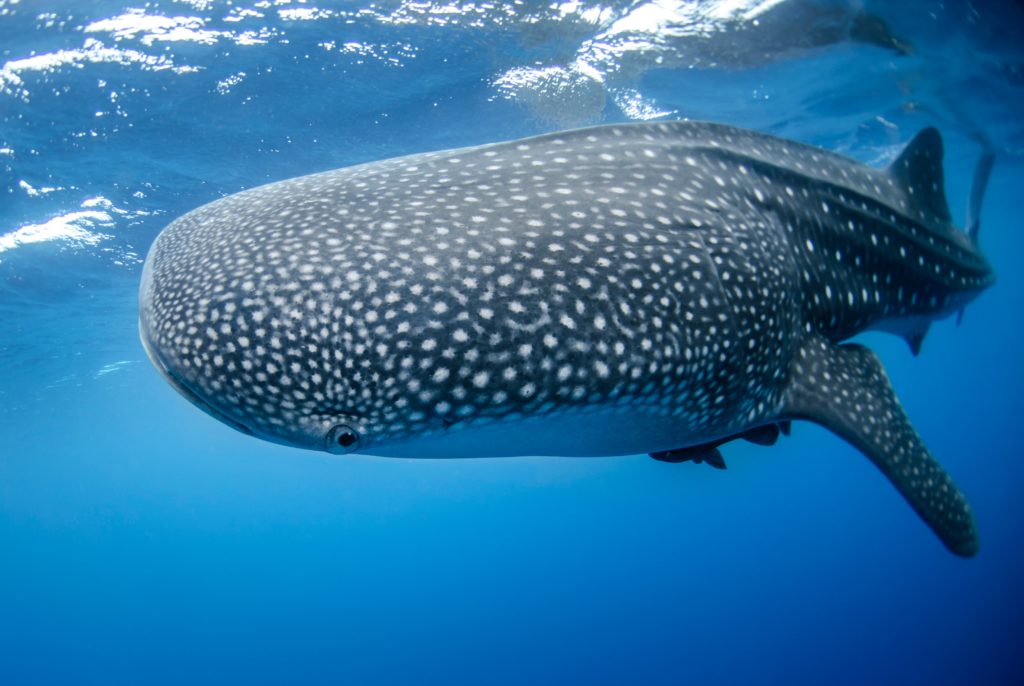
Whale Shark
Don’t let the world’s largest fish take your breath away while you’re Scuba Diving. These majestic creatures are a rare sight in South Florida but have been spotted near the Gulf Stream in Key Largo and Jupiter.
Size: 20 – 45 feet, max 55 feet
Depth: 0 – 100 feet
Habitat and Behavior:
Considered oceanic, you’ll be extremely lucky to see one cruising along deeper coral reef walls.
Whale Sharks open their massive mouths to feed on plankton, baitfish, and other small creatures.
Location for Possible Sightings:
Deeper wrecks like those in Jupiter or Key Largo.
Although, your best bet is likely across the pond in Mexico.
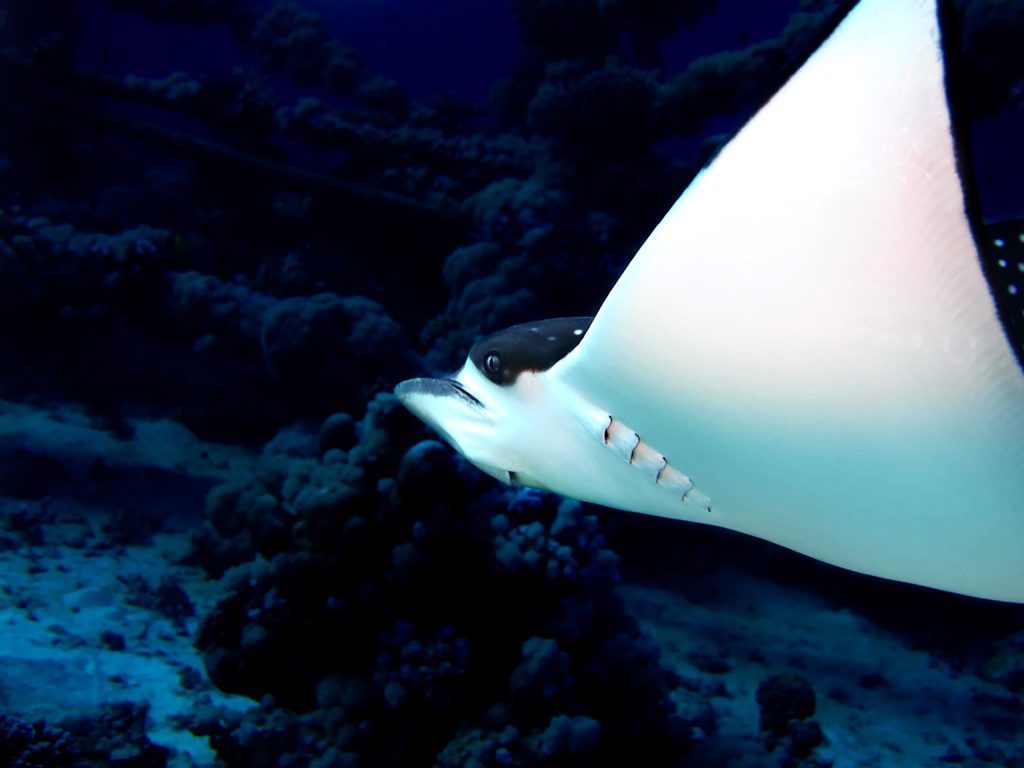
Spotted Eagle Ray
If you’re lucky enough to come across one, you’ll understand why it got that name. Spotted eagle ray’s gracefully fly through the water with ease similar to an eagle’s flight. It’s prominent lower jaw and white spots will be hard to miss.
Size: 4 – 6 feet, max 8 feet (wing to wing)
Depth: 6 – 60 feet
Habitat and Behavior:
Spotted Eagle Ray’s are typically shy of divers. I’ve seen a few on my descent before they flew off into the distance.
Additionally, we’ve seen a few young spotted eagle rays from the deck of a boat while cruising over sea grass beds in Biscayne Bay.
Location for Possible Sightings:
Deeper reef sights are a better bet in the 40 – 60 foot range. Victory Reef in Islamorada or Hammerhead Reef in Fort Lauderdale are possibilities.
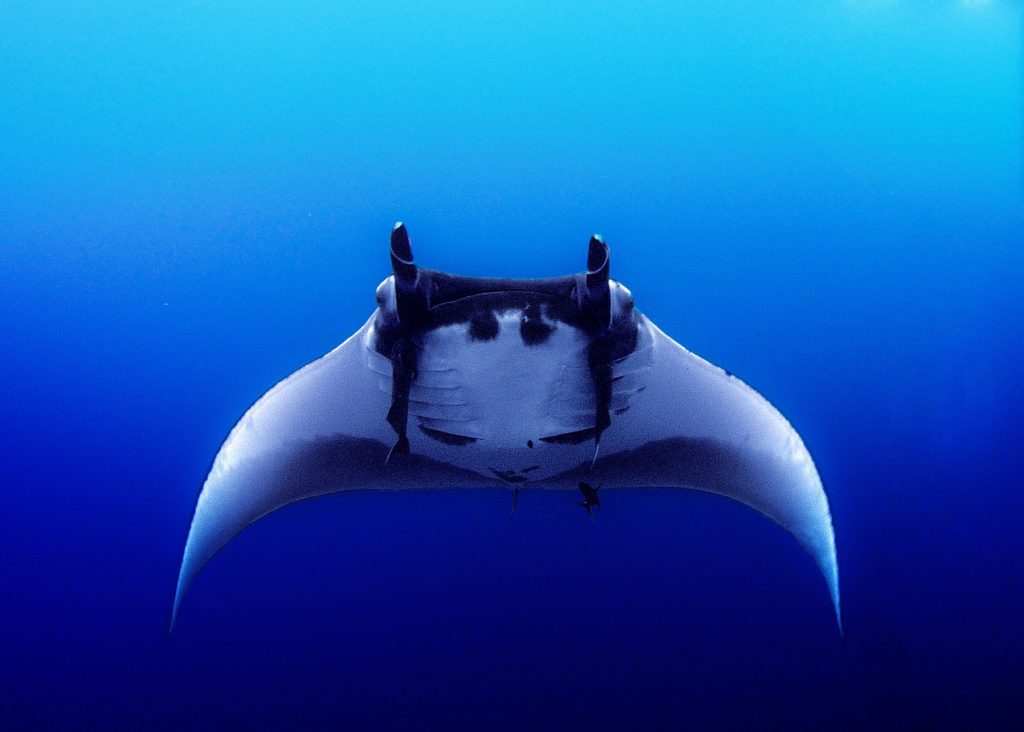
Manta Ray
If I were to pick an animal that truly represents a mythical creature, Manta Rays would be my top choice. I mean, look at that thing!
These wide mouthed ocean animals will occasionally make an appearance in Florida waters.
Size: 6 – 15 feet, max 20 feet (wing to wing)
Depth: 0 – 60 feet
Habitat and Behavior:
Manta Rays tend to stay in deeper waters as they cruise near the surface to filter plankton out of the water.
Occasionally, they will check out a shallower reef in Florida.
Location for Possible Sightings:
Dive Sites near the Gulf Stream such as those in Key Largo or Jupiter.
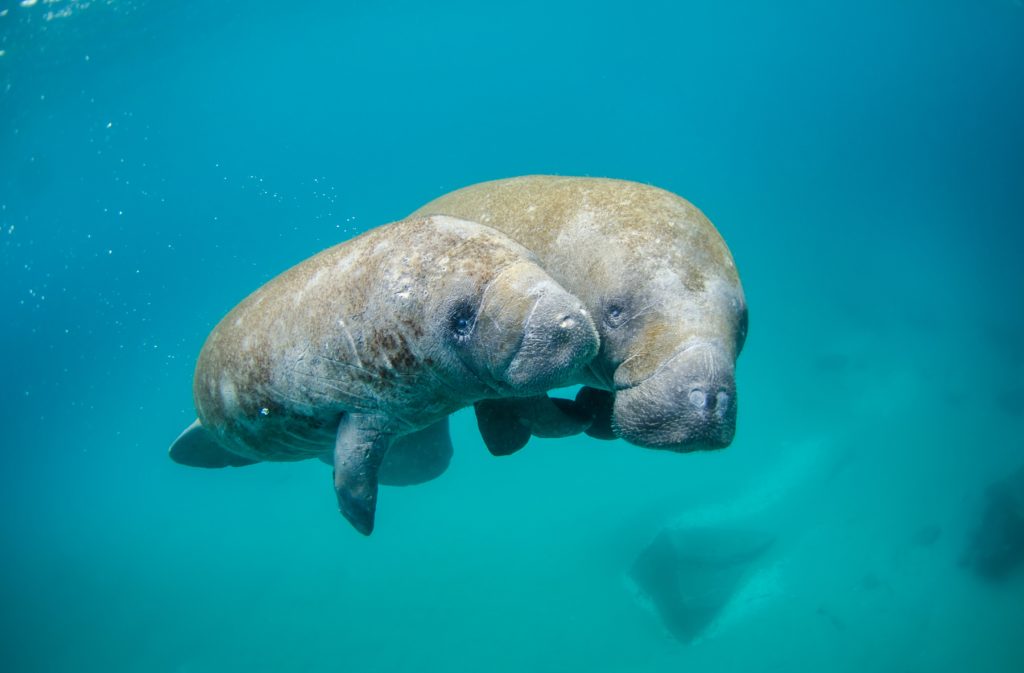
Manatee
Aaah, the Sea Cow. Once listed as endangered, increased numbers have now designated them as threatened. We’re improving but there’s still work to be done!
Manatees are gentle giants most closely related to elephants. You likely won’t see them during a dive but possibly during an inland, mangrove, sea grass, or bay snorkel (it’s illegal to touch them, though!)
Size: 8 – 13 feet and upwards of 1,000 lbs!
Depth: 0 – 15 feet
Habitat and Behavior:
Spending most of their lives in shallow, warm waters, the marine mammal eats a herbivorous diet consisting of seagrass and other vegetation.
Manatees need to come to the surface approximately every 20 minutes for fresh air – even while they sleep. This makes them particularly vulnerable to threats such as motorboats.
During the winter, seeking warmer water, manatees will migrate into fresh water springs to survive the cold ocean water.
Location for Possible Sightings:
Marinas, mangrove habitats, seagrass beds, and springs during the winter.
Some would say Crystal River, Florida is the Manatee capital of America. We booked a manatee snorkel trip with River Ventures and were not disappointed!
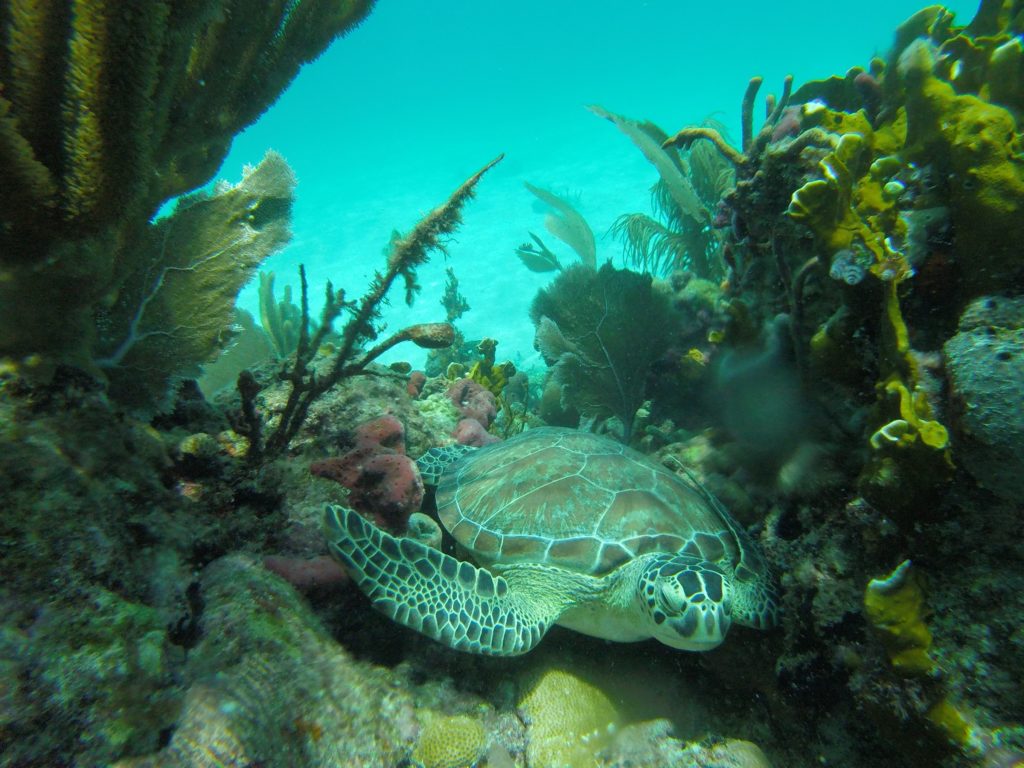
Sea Turtles
Worldwide, seven species of sea turtles roam the oceans. In Florida, five can be found: Loggerhead, Green, Leatherback, Kemp’s Ridley, and Hawksbill.
In fact, during March through October, South Florida serves as one of the busiest loggerhead and green sea turtle nesting beaches in the world. As a scuba diver, this means your chances of spotting one has just gone up! Lucky you!
In addition, this ancient reptile is facing massive threats from human impact all around the world. Here’s a few ideas on how you can help.
Size: Species dependent. Loggerhead turtles can grow to nearly five feet in length and upwards of 300 lbs!
Depth: Again, species dependent. Leatherback turtles can dive to as deep as 3,000 feet!
Habitat and Behavior:
Species dependent, but Loggerhead and Green Sea Turtles tend to stay in shallower waters near coral reef or seagrass beds. It’s all dependent on their diet, really.
Most will be wary of divers and if you encounter one you should keep a safe distance as they are listed as endangered or threatened under the Endangered Species Act in the US.
Location for Possible Sightings:
Most dive sites in South Florida have a good chance of spotting a sea turtle. Particularly between March and October.

Dolphins
The mysterious marine mammal can be spotted everywhere down in Florida. However, it’s typically from a boat and not during a dive.
Known to be highly intelligent, dolphins have their own language and forms of communication we cannot understand to this day.
Note: due to their high intelligence, dolphin captivity in aquariums is widely agreed on to be extremely unethical.
If you’re going to support businesses interacting with dolphins, attend a cruise or visit a rehabilitation center where dolphins are in their natural habitat or being treated for ailments.
Size: 3 – 6 feet
Depth: shallow waters in the bay or around coral reef
Habitat and Behavior:
Shallow, warm water. A mother and her calf will typically spend their time in a calm bay for a few years.
Dolphins are true carnivores, eating fish, squid, and small crustaceans.
Location for Possible Sightings:
Cruising the bay, the Florida Keys, or off the coast of South Florida. Dolphins can become playful, particularly in the bay where the young are raised.
Momma dolphin will actually her calf play in the wake of the boat to build up strength in her baby.
As for diving? Your guess is as good as mine. In all my dives I’ve only had ONE approach me underwater! EVER! They must be super smart or something…
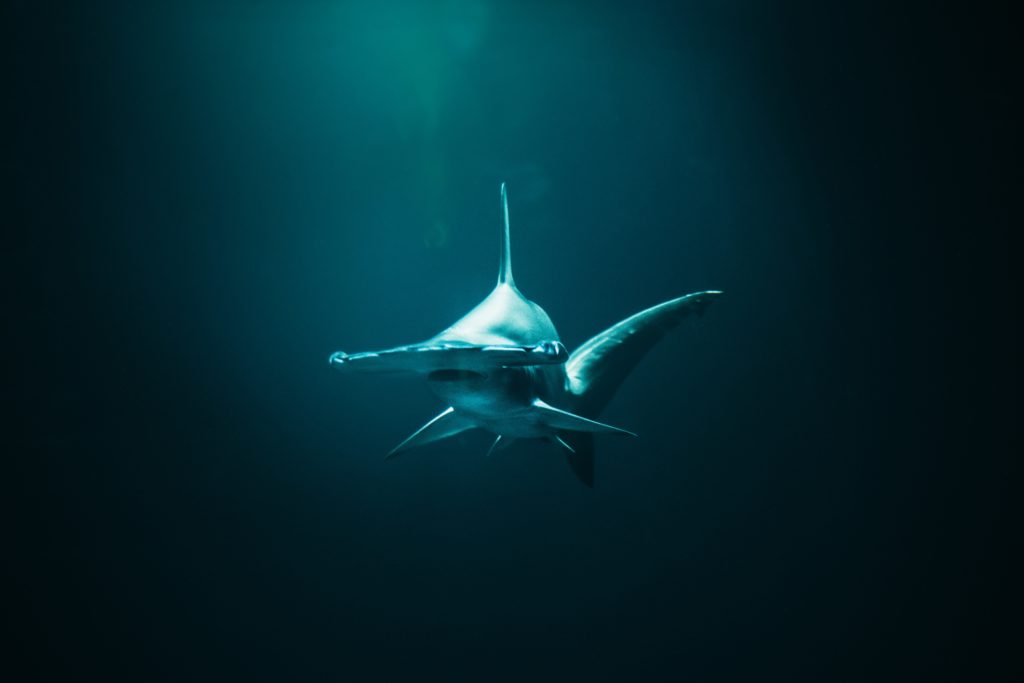
Great Hammerhead Sharks
The sheer existence of a shark that has a head shaped like a hammer is mind blowing! Unfortunately for us, these sharks often move away from divers when encountered.
Size: 5 – 14 feet, max 20 feet
Depth: 10 – 200 feet
Habitat and Behavior:
Typically stays offshore. May travel along the Gulf Stream but has been known to make an appearance on local reefs.
Location for Possible Sightings:
This is a roll of the dice. I saw a glimpse of one during our shark dive in Jupiter. Hopefully you can be just as lucky!
Plenty of other sharks can be seen in Florida!
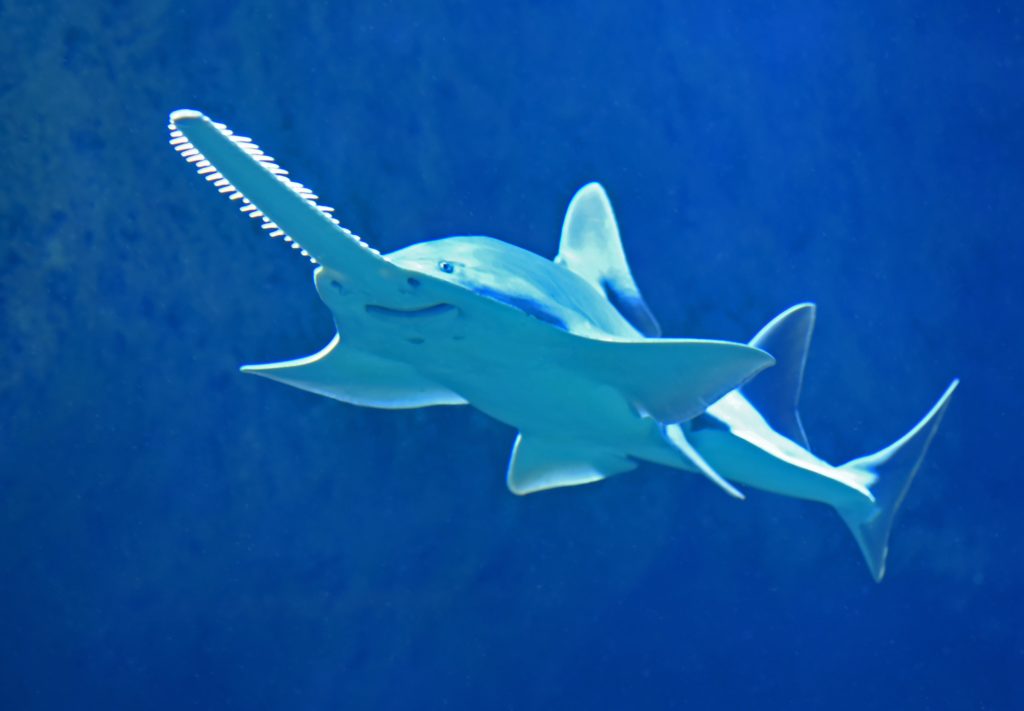
Sawfish
I know what you’re thinking: “THAT thing is REAL?!” And I’m here to tell you: Yes! THAT thing IS real!!
The smalltooth sawfish is the only species of seven found in Florida. Although it looks like a shark, it’s actually more closely related to a ray.
Size: 3 – 12 feet, max 16 feet
Depth: shallow bay waters to offshore depths
Habitat and Behavior:
Smaller sawfish can be found in bays, estuaries, and river mouths in Southwest Florida down to the Florida Keys.
The endangered species is still very much a mystery as research has been limited due to elusiveness and decreased numbers.
Location for Possible Sightings:
Captain Bert, the man who taught me everything I know about boating, reported seeing one years ago off the shore of Long Key in the Florida Keys on a reef ledge.
Since then, I haven’t heard of any sightings. So cross your fingers and hope you get lucky.
Best bet is probably spotting one from the boat on a clear day in a mangrove estuary.
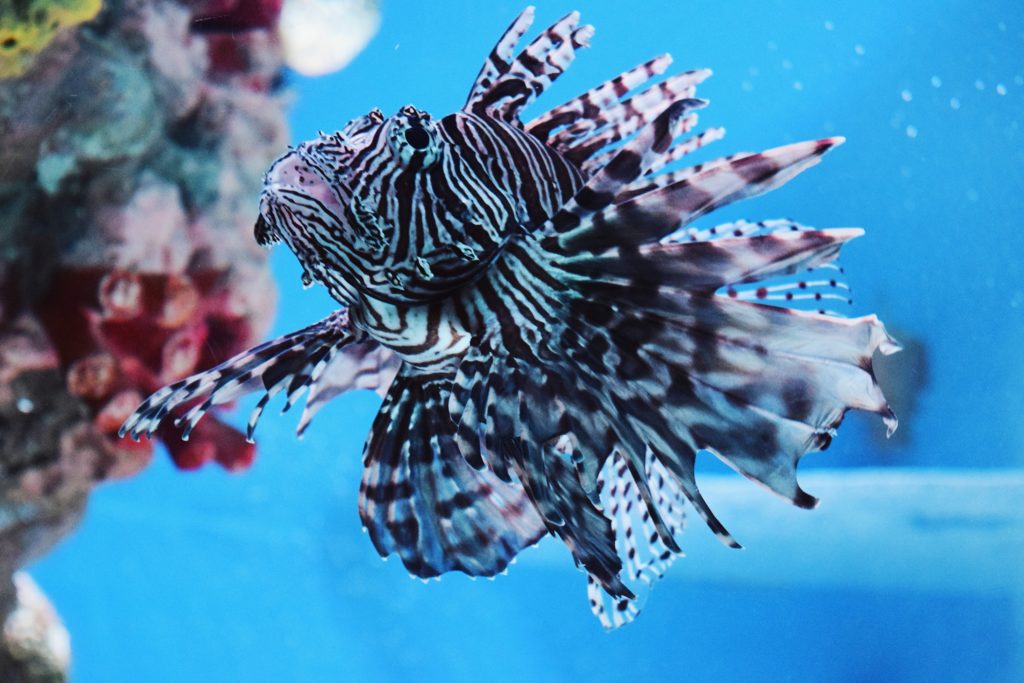
Lionfish
Although beautiful, this invasive species is causing some real harm to our coral reefs in Florida and beyond. So as far as “cool ocean animals in Florida”, this one is actually totally uncool.
Originally from the Indo-Pacific, lionfish have no natural predators in Atlantic waters while simultaneously eating anything and everything. They decimate native fish populations and cause damage to coral reef health.
Size: 5 – 10 inches, max 15 inches
Depth: 1 – 1,000 feet
Habitat and Behavior:
Can usually be found on most coral reef sites, wreck sites, or deeper.
During the day, they can be found under ledges and crevices. At dawn and dusk, they come out to hunt.
Their appetite knows no limits as they will eat anything that fits in their mouth. They also have a stomach that can expand 30x its size to accommodate all those goodies!
Location for Possible Sightings:
Unfortunately, every dive site in Florida. They spread like mad and the only way we can control them is by humans hunting them.

Goliath Grouper
Ive always compared Goliath Grouper to mini cars. If you see one while diving, you’ll know exactly what I mean. Really, these things are HUGE!
This is likely the largest fish you’ll see on coral reefs in Florida. Just don’t get too close! They can actually make an audible “bark” informing you that you’ve gotten too close!
Size: 4 – 6 feet, max 8 feet
Depth: 10 – 100 feet
Habitat and Behavior:
Goliath Grouper like to hide in caves, wrecks, and under ledges and can become quite curious when they see a diver.
Location for Possible Sightings:
Any deep ship wreck in Fort Lauderdale, Key Largo, or Islamorada may have some Goliath Grouper inhabiting its corners.
Jupiter, Florida is known to be a destination for aggregating grouper. Between August and October, 100 – 150 different grouper travel great distances to spawn in specific locations.

Octopus
Possibly the coolest of the ocean animals in Florida? Octopus can frequently be spotted at nighttime on coral reefs in South Florida.
If you haven’t noticed, they even helped inspire our logo up top!
Size: species dependent.; Caribbean Reef Octopus are 12 – 20 inches
Depth: 15 to 75 feet
Habitat and Behavior:
Regarded as highly intelligent, this invertebrate is a master of disguise. Using special cells, octopuses can change their color to match any surrounding at any moment. Pretty cool, eh?
Not to mention, these creatures will spread out in a distinctive parachute to engulf their prey.
Location for Possible Sightings:
Any coral reef between 15 and 75 feet at night time. You simply won’t see this guys during the day.
I’ve seen a few octopus at Lauderdale-by-the-Sea beach site and Alligator Reef in Islamorada.
Source Information and Marine Life Resources:
The information from this post was sourced from our very own Marine Scientist, Laura, and the book “Reef Fish Identification – Florida, Caribbean, Bahamas – 4th Edition” by Paul Humann and Ned Deloach.
For more information on sharks, fish, coral, and reef creatures, we HIGHLY recommend their entire series of books for your library:
For more: Resources for Marine Life ID in Florida
Enjoy this Post? Pin it!
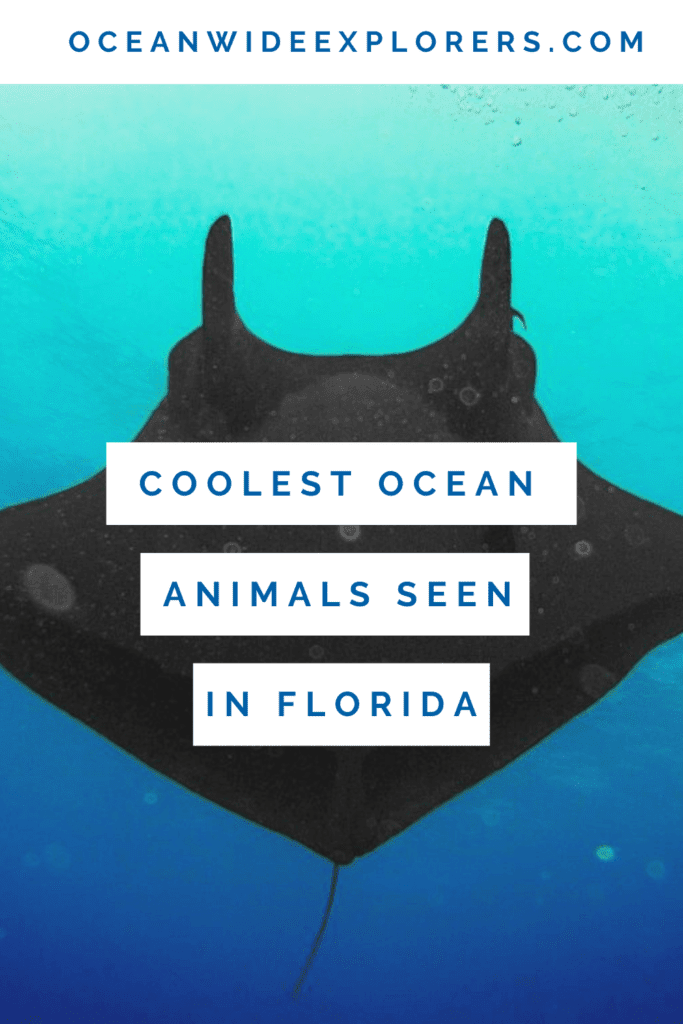
Read More About Marine Life in Florida
We hope you enjoyed our post on our favorite ocean animals in Florida. Hopefully you’ll find it useful on your next adventure! Here are a few more ocean-loving articles we think you should read next:
- 11 Reasons to Dive in Fort Lauderdale
- Meet the Sea Turtles of Florida
- 18 Facts You Should Know About Lionfish
- Common Sharks Seen While Diving in Florida
What ocean animals have you seen in Florida? We want to hear from you! Leave a comment below!

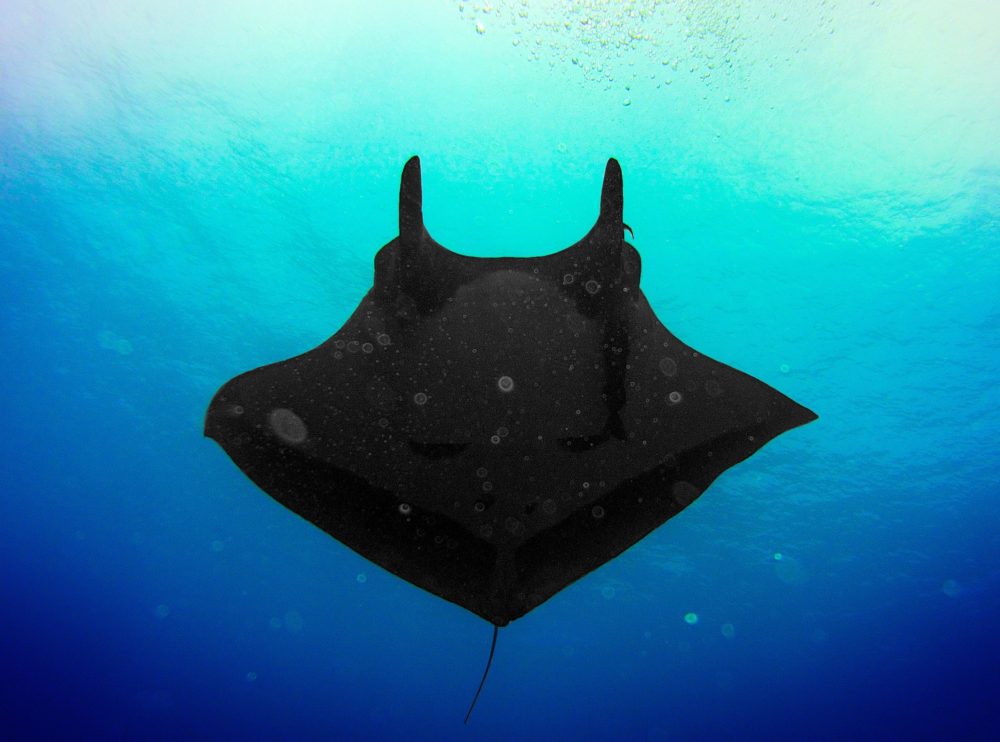



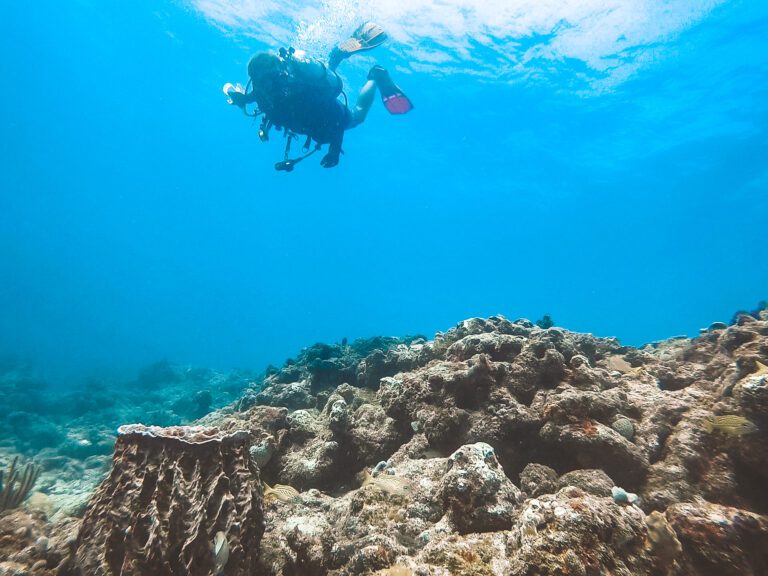
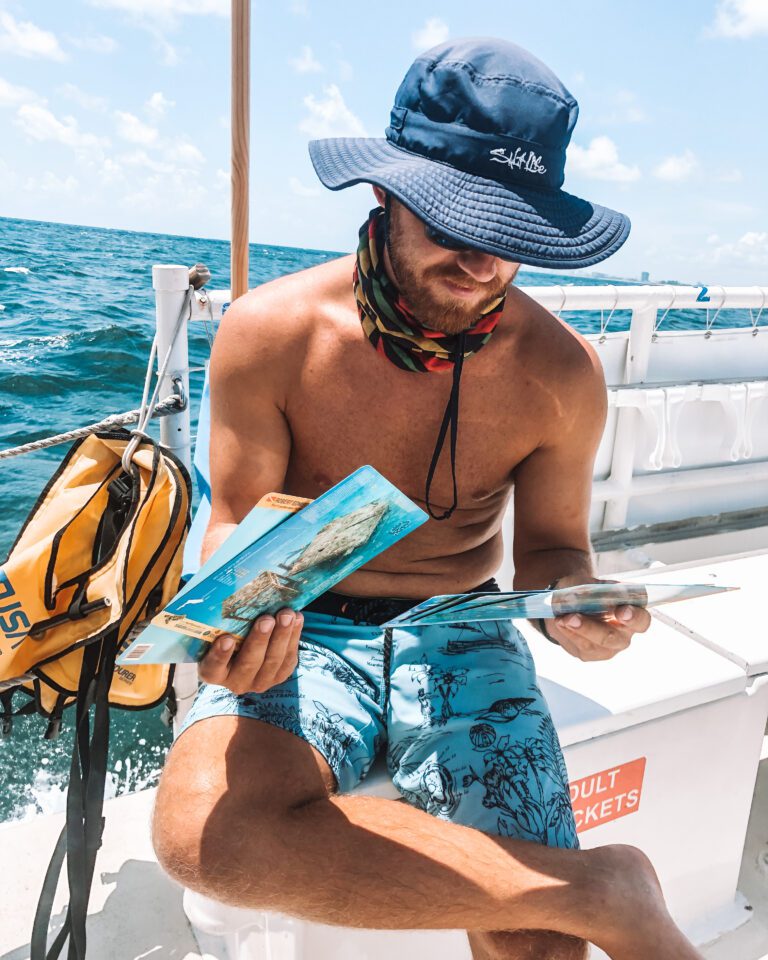
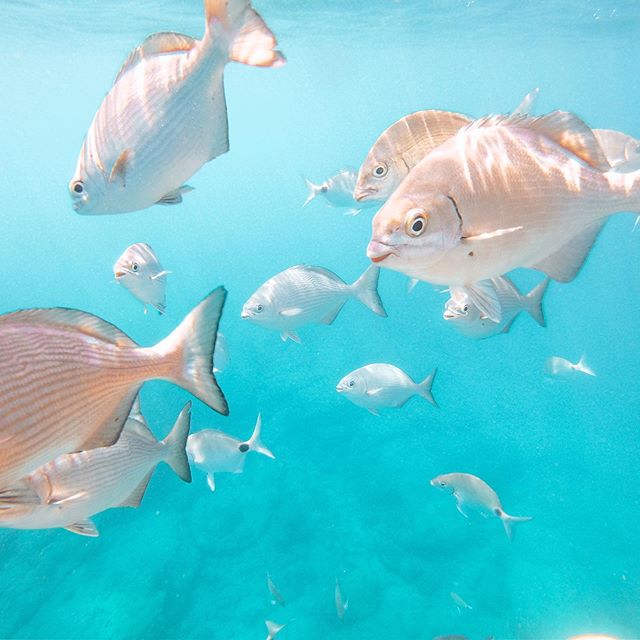

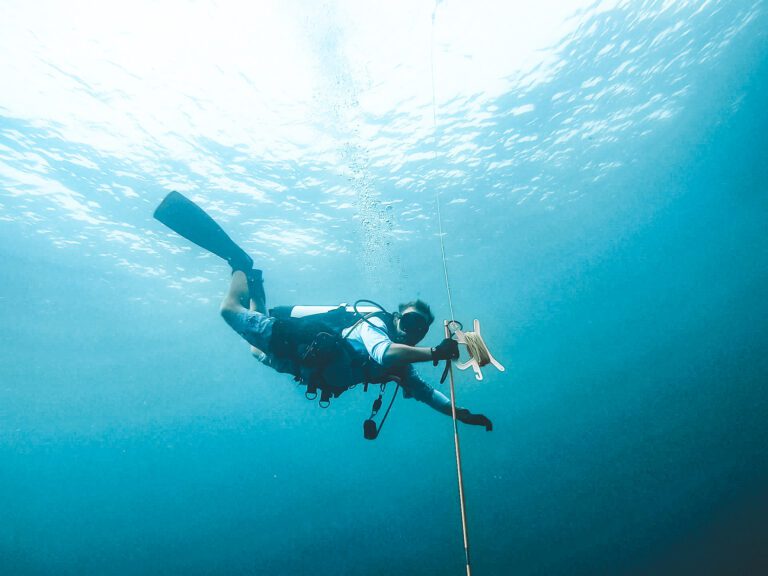
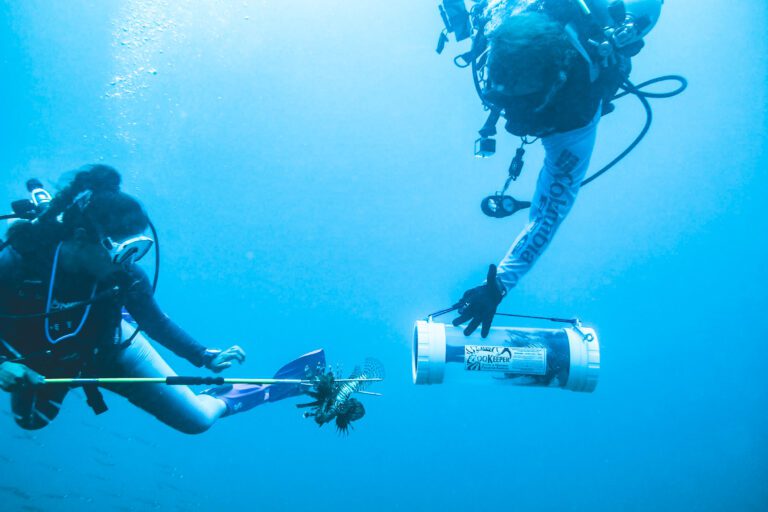
2 Comments